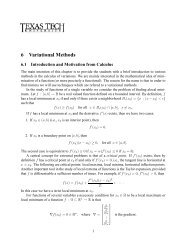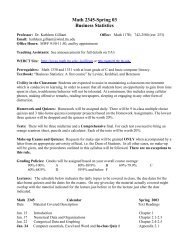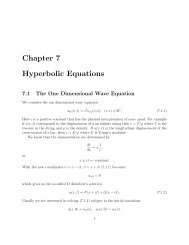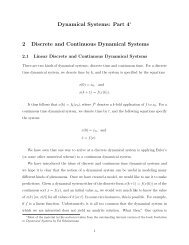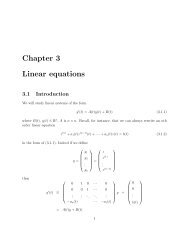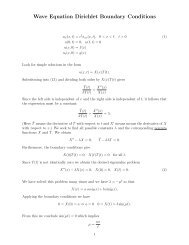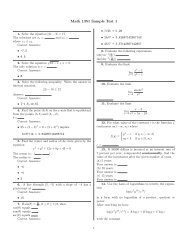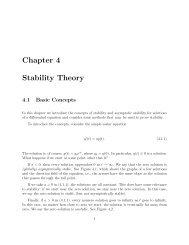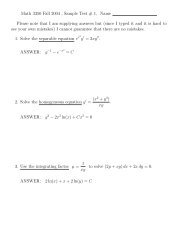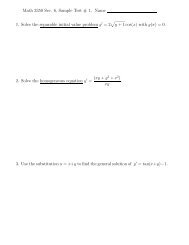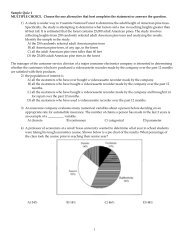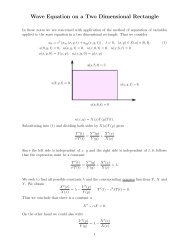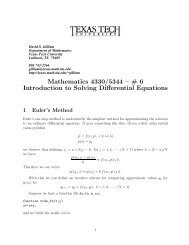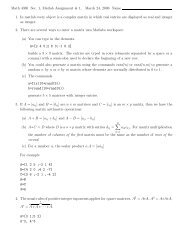Chapter 6 Partial Differential Equations
Chapter 6 Partial Differential Equations
Chapter 6 Partial Differential Equations
Create successful ePaper yourself
Turn your PDF publications into a flip-book with our unique Google optimized e-Paper software.
44 CHAPTER 6. PARTIAL DIFFERENTIAL EQUATIONS<br />
or<br />
We take<br />
Then<br />
− ln(x) =i ln(y)+K, K a constant.<br />
α = ϕ 1 (x, y) = ln(x), β = ϕ 2 (x, y) = ln(y).<br />
ã = x 2 ( 1<br />
x 2 )<br />
+2b 1 x (0)+0=1=˜c,<br />
˜b =0,<br />
(<br />
˜d = x 2 − 1 )<br />
+0+y 2 (0) = −1,<br />
x 2 ( ) −1<br />
ẽ = x 2 (0)+0+y 2 = −1.<br />
y 2<br />
Thus we have<br />
u αα + u ββ − u α − u β =0.<br />
We conclude this discussion by considering another example. The main point of this<br />
example is to illustrate that the classification of a differential equation is a local result.<br />
Example 6.3.9. The Tricomi Equation.<br />
u yy − yu xx =0.<br />
For this equation, D = b 2 − ac = y. So when y0<br />
the equation is hyperbolic and when y = 0 the equation is parabolic.<br />
For this example a = −y, b = 0 and c = 1 so the characteristic equation<br />
dy<br />
dx = b ± √ b 2 − ac<br />
a<br />
reduces to<br />
√<br />
dy −ac<br />
dx = ± a<br />
= ± 1 √ y<br />
.<br />
Since<br />
For y>0 the equation is hyperbolic and the characteristic curves are are given by<br />
3x ± 2y 3/2 = constant



